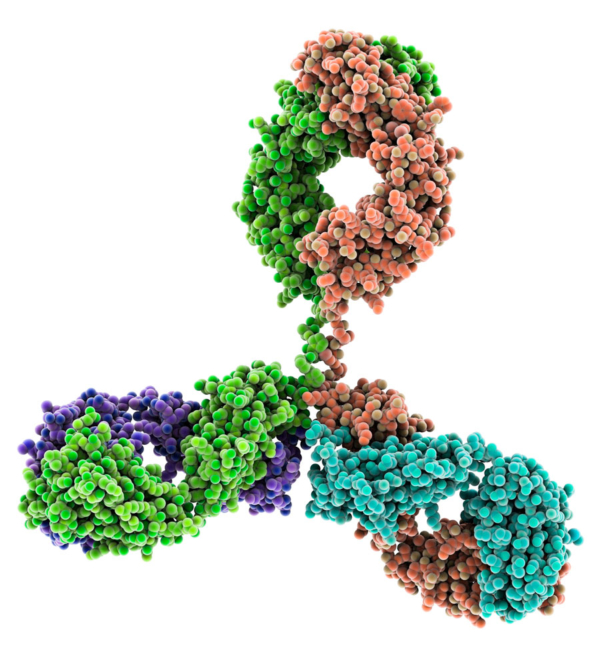Protein Footprinting Services in mAb Design & Production
Let GenNext scientists generate high-value information to help you characterize monoclonal antibodies for effective and safe biologics. Fox Technology is being used to study antigen-binding sites, epitope/paratope mapping, host antibody responses, antibody aggregation, and more. Leading biopharmaceutical organizations are leveraging the novel, actionable insights generated by the highly trained contract research team at GenNext.
mAb Design
With high-resolution structural information for epitope and paratope mapping, customers are accelerating the rational design of therapeutics.
mAb Production
Monitoring mAb structure during scale-up to ensure batch-to-batch structure stability over time is ensuring product shelf life and continued efficacy.
Advantages of HRPF for mAb Analysis
Elucidating In-Solution mAb Structure & Dynamics
Although high-resolution protein structure analysis techniques such as MX, NMR, and cryoEM offer important insights, these approaches are unable to monitor the structure and dynamics of mAb formulations in-solution because of their specific sample preparation requirements.
For example, MX requires the crystallization of proteins, cryoEM is measured in the frozen state, and NMR typically requires high concentrations and cannot be applied to proteins larger than 100 kDa. These approaches may disrupt antibody structure, require high concentrations, or result in other conditions that inhibit the accurate determination of antigen binding or kinetics.

In comparison, the Fox System, which employs the HRPF approach, provides dynamic, in-solution structure and interaction information for a wide range of protein sizes, states, and concentrations, such as:
- HRPF provides structure information for 19 out of 20 amino acid side chains providing richer solvent accessibility information to the residue level.
- The stability of the HRPF label enables a flexible post-labeling workflow for your specific study. For example, glycans can be easily removed post-labeling allowing the study of highly glycosylated proteins. Also, a wide range of proteolytic enzymes and long LC gradients can be used during MS analysis to ensure proper coverage.
- The Fox System uses a patented method for measuring effective hydroxyl radical concentration that delivers highly controlled and reproducible data for greater confidence in the mAb structure.
In mAb design, use the high-resolution structural information generated from HRPF for epitope and paratope mapping to accelerate the rational design of therapeutics. In mAb production, use HRPF to monitor mAb structure during scale-up to ensure batch-to-batch structure stability over time, ensuring product shelf life and continued efficacy.
Interview with Dr. Joshua Sharp on Characterizing the HOS of mAbs
Hear about Dr. Sharp’s article on the Structural Investigation of Therapeutic Antibodies Using Hydroxyl Radical Protein Footprinting Methods and how GenNext is engineering new technologies to answer difficult HOS questions.

Dr. Joshua Sharp
University of Mississippi & GenNext Technologies
Dr. Sharp is a world-renowned expert with more than 25 peer-reviewed articles and numerous lectures on biopharmaceutical HRPF. Publishing the first benchtop methods for HRPF, Dr. Sharp’s innovations included the use of UV photolysis of hydrogen peroxide for hydroxyl radical generation. Along with his role as Chief Technology Officer for GenNext, Dr. Sharp is also an Associate Professor of Pharmacology and Research in the Research Institute of Pharmaceutical Sciences at the University of Mississippi. Professor Sharp serves on multiple national and international advisory and review panels as an expert on protein and carbohydrate biophysical and structural analysis by mass spectrometry.
Take a Deep Dive
Complete the short form to view our toolkit and explore the potential of HRPF in your mAb studies.
mAb Downloadable Toolkit
ON-DEMAND PRESENTATIONS
- HRPF for mAb Drug Development
- HRPF for mAb Aggregation
- Mapping the Paratope and Epitope of TNFα Bound to Adalimumab
- Review of Technologies for HOS Analysis
PAPERS & LITERATURE
- Structural Investigation of Therapeutic Antibodies Using Hydroxyl Radical Protein Footprinting Methods paper authored by Dr. Corie Ralston of the Lawrence Berkeley National Laboratory and Prof. Joshua Sharp of the University of Mississippi and published in the journal Antibodies.
- Revealing Antibody Aggregation White Paper
- Mapping the Epitope of TNFα Bound to Adalimumab Poster Note
- Review of Technologies for HOS Analysis Tech Note
- GenNext Services FAQ
